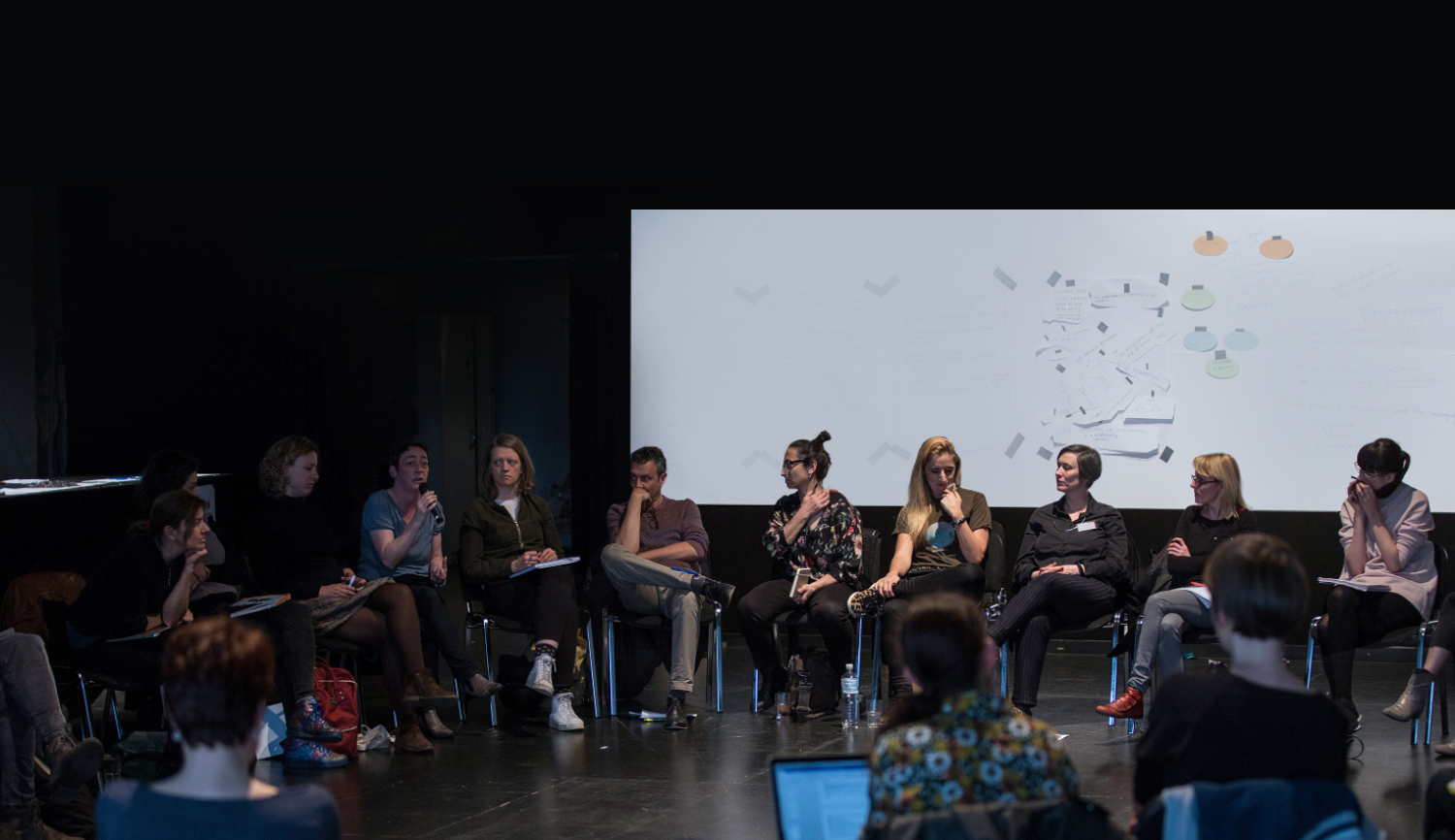

The Atelier organised by K3 Hamburg discussed and practiced different models of solidarity within and between production structures and artists, investigated possible media of collaboration and explored choreographic forms of collaboration.

The three-day symposium Working Together Transnationally. Structures, Conditions and Artistic Practices took place from March 31st until April 2nd in collaboration with the European Dancehouse Network. Curated together with the Brussels based sociologist Rudi Laermans and facilitated by Fearghus Ó Conchúir, about 70 international guests and participants discussed and practiced models of solidarity within and between production structures and artists, investigated possible media of collaboration and explored choreographic forms of collaboration.
Improving artistic working conditions in Europe together
In the last years all over Europe artistic budgets are under pressure and/or have been cut. Theatres, festivals, dancehouses and other artistic institutions on the one hand have to face increasing fixed expenses, but cultural politics on the other hand often expects them to program more events with less budget. Thus, the amoung of artistic activities and productions in general does not seem to decrease, but to grow. This is also due to the fact that in the past years, numerous training courses for choreography, dance, dance meditation, and performance have been developed and young artists try to find their way into the tight professional market.
In reaction to this highly competitive situation artists, who are used to work under precarious working conditions but don’t want to accept this any longer, start to organize themselves in order to discuss fair working conditions, minimum standards and modes of transparent decision making. These activities are not easy to organize among an artistic scene in a city or country, but become even more complicated when it touches the transnational sphere of artistic production and thus the incomparability of living and working conditions among European countries. By sharing best practices and innovative concepts that try to initiate models of solidarity, fair practices and sustainable and reliable working conditions, the day aimed at developing key questions as well as minimum standards in order to improve artistic working conditions in Europe together.
Statements by: Annelies van Assche, Janina Benduski, Jenny Beyer, Roberto Casarotto, Kristin de Groot, Walter Heun, Bettina Masuch, Steriani Tsintziloni.
To a certain extent, each collaboration is a social experiment in “togethering” that necessitates both resources and particular “media of collaboration”. Although that latter expression is not exactly an established one, the notion of medium may offer a stimulating eye-opener in trying to think through collaborative practices.
A medium literally lies in the middle: it is in between partners or participants and/or things. Simultaneously, this “middle” acts as a fluid that relates and through which something can be transmitted. As such, a medium differs from an instrument or a mere resource like money. Friendship and non-sexual “love”, mutual trust, a shared personal interest, reciprocal respect and recognition, the capacity to relate both professionally and diplomatically, and common value priorities or cultural frameworks can be regarded as are some of the prime media of collaboration. However, media of collaboration are overall somewhat ambivalent. Their principal facilitating role can never eliminate the intrinsic possibility that they start to hamper or block a collaboration. While quite a lot has been said on collaboration’s recourses, we wanted to focus on both the uniting and dividing functioning of media of collaboration on the basis of practical experiences as well as more elaborated statements. In thinking through existing and potentially new media, we closed the day with a temporarily validated glossary of media of collaboration.
Statements on specific media of collaboration by: Eleanor Bauer, Leonardo Delogu, Kristinn Gu∂munsson, Brendan Keaney, Sandra Noeth, Biljana Tanurovska, Gesa Ziemer.
Having discussed structural aspects of solidarity as well as the binding and/or separating “media” of collaboration, the third day of the Atelier joined people in the studio. Two parallel workshops in the morning and two parallel workshops in the afternoon suggested methods and approaches of how to work together artistically and on a practical level with the body involved. How can these models of collaboration feed in to other working frames, how does the artistic and choreographic approach open new perspectives on the way people practically work together?
Workshops on collaborative artistic practices by: Eleanor Bauer, Leonardo Delogu, Eszter Gal, Saga Sigurdardóttir/Marble Crowd.
Feargus Ó Conhúir (Independent choreographer and dance artist that acted as facilitator for the Atelier), Kerstin Evert (director of K3 Hamburg), Rudi Laermans (sociologist and co-curator of the Atelier) and Solveigh Patett (dramaturge and project coordinator at K3 Hamburg) collected and compiled all content of the 3 days.
Find their overview, together with three contributions from speakers and participants, on this page.
Picture: Thies Ratzke